Performance Management Statistics By Assessment, Employee Engagement and Facts
Updated · Jan 07, 2025
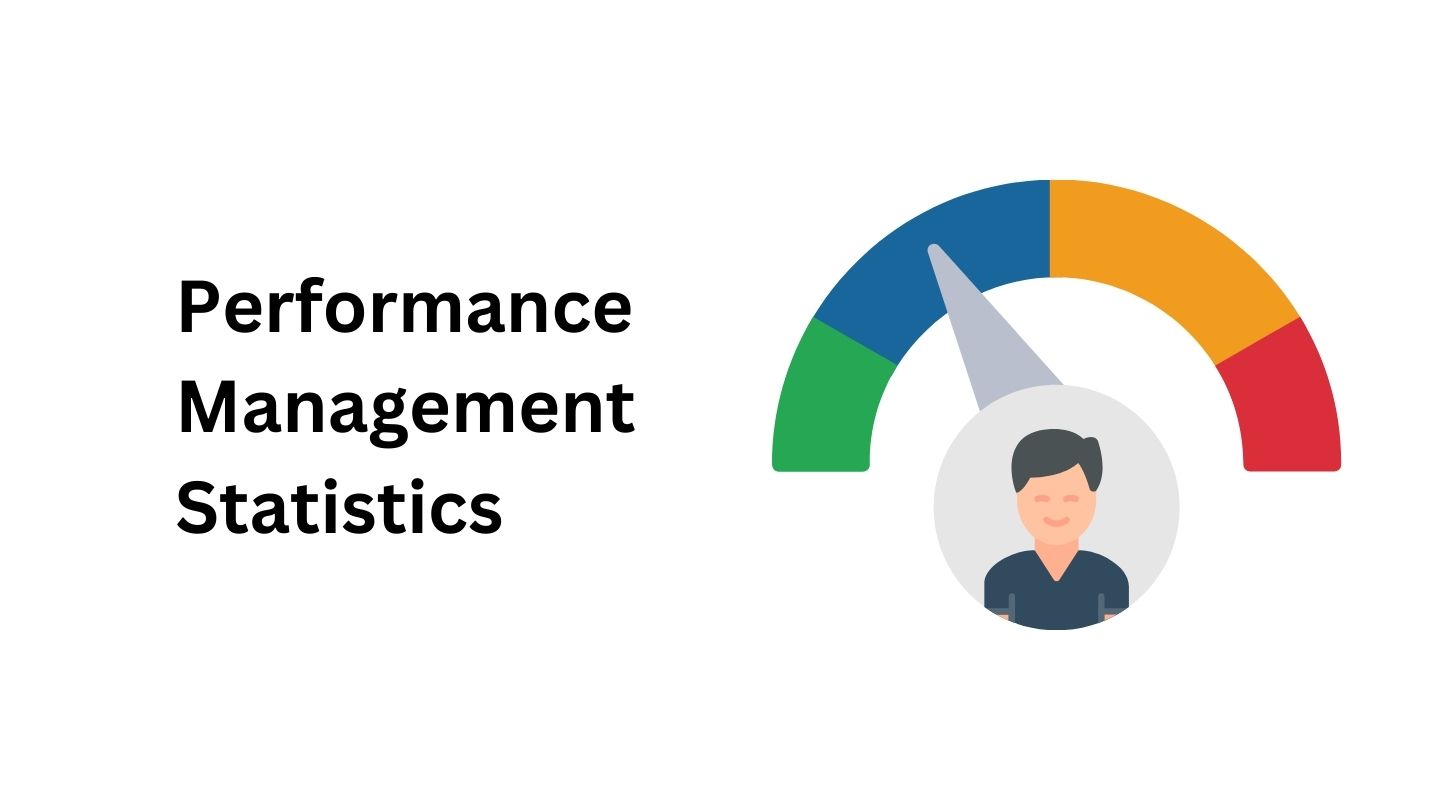
Table of Contents
- Introduction
- Editor’s Choice
- Employer Relations in Performance Management
- Employees Receiving Feedback Frequency
- Employee Engagement as an Indicator of Profitability
- Organisations Focus on Growth
- Employees Cause of Concern
- Employee’s One-on-one Preference with Manager
- Performance Management Assessment
- Annual Employee Engagement
- Employee Performance Management as a Category
- Employee Feedback and Engagement Comparison
- Advantages of Employee Feedback Process
- Employee Feedback Frequency
- Manager Feedback Advantages
- Impact of Training on Employees
- Employee Performance Review Overview
- Hurdles in Performance Management
- Frequency of Reviews Among Organizations
- Conclusion
Introduction
Performance Management Statistics: In today’s dynamic workplace, performance management has emerged as a critical strategy for organizational success. By learning about Performance Management statistics, we can unveil the intricate landscape of employee engagement, feedback mechanisms, and organizational development. From understanding employee perceptions to exploring the impact of training and feedback, these statistics provide a holistic view of modern performance management practices.
We can learn from various sources, gaining insights into how companies address workforce challenges, improve productivity, and create more supportive work environments.
Editor’s Choice
- Only 26% of employees have a positive overview of their employers
- 48% prioritize productivity and engagement development
- 58% believe performance management could be more effective
- Employee engagement globally stands at 23%
- 70% of employees are average to above-average performers
- 85% say feedback encourages taking more initiative
- 90% believe proper training enhances productivity
- 63% of organizations conduct annual employee reviews
- 41% cite unfair compensation as a primary HR concern
- 43% of remote employees prefer weekly one-on-one meetings
- Only 8% find performance management highly effective
- 73% report feedback leads to better collaboration
- 86% indicate training improves employee retention
- 29% strongly agree performance reviews are fair
- 9% face management opposition in performance processes
Employer Relations in Performance Management
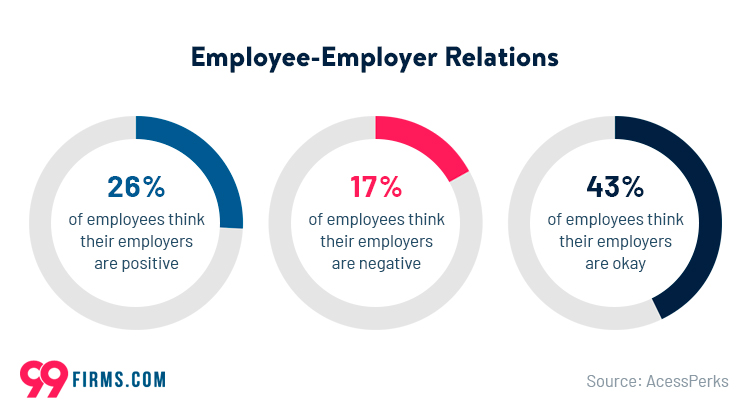
(Source: 99firms.com)
- Performance Management statistics show that 26% of employees have a positive overview of their employers.
- 17% of employees think that their employers are negative.
- 43% of employers find their employers are okay.
Employees Receiving Feedback Frequency
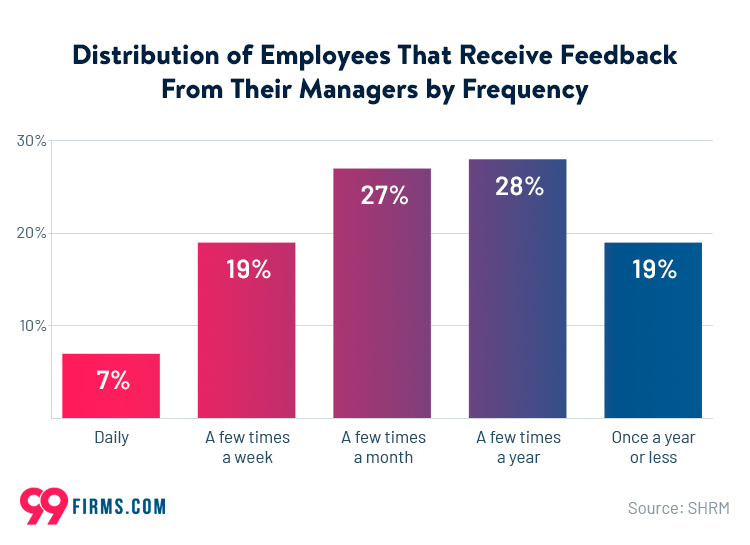
(Source: shrm.org)
- Performance Management statistics show that employees receive 28% of respondents receive employee feedback a few times a year.
- 27% of respondents receive feedback a few times a month.
- 19% of respondents receive feedback a few times a week.
- 19% of respondents receive feedback once a year or less.
- 7% of respondents receive feedback daily.
Employee Engagement as an Indicator of Profitability
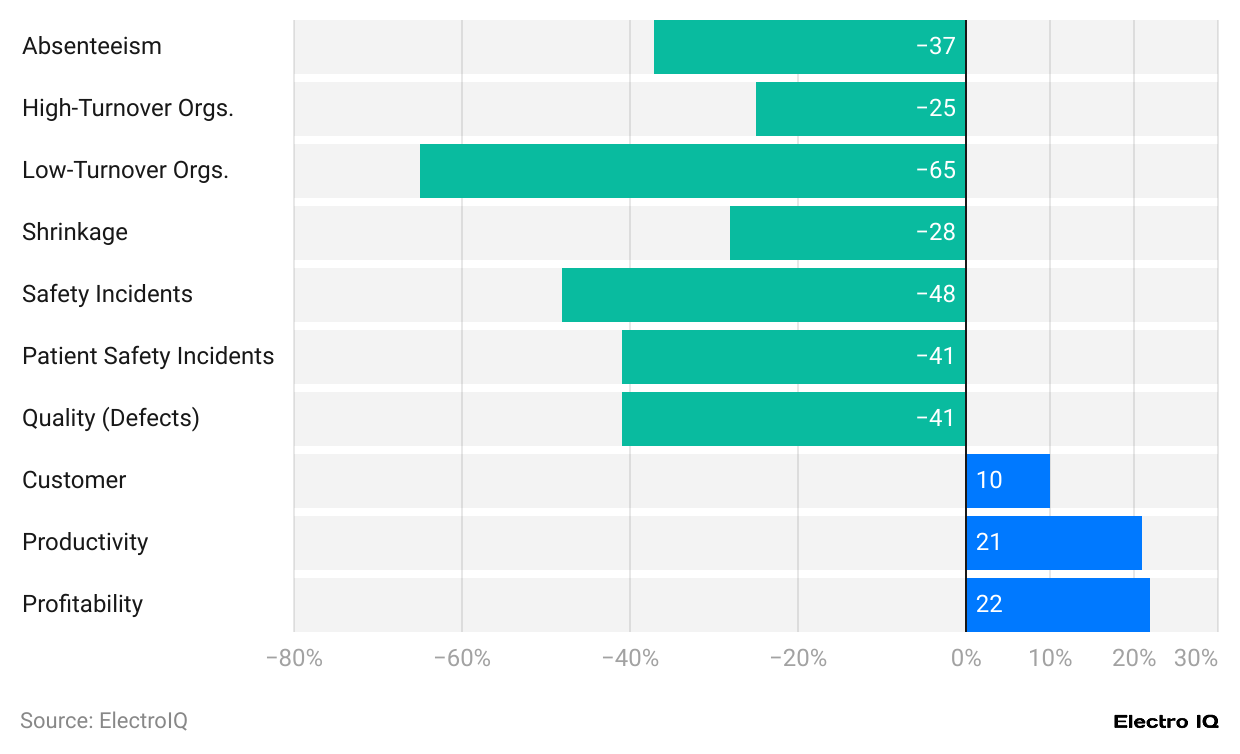
(Reference: enterpriseappstoday.com)
- Performance management statistics show that absenteeism is the most negative factor, which is expected to decrease employees’ productivity by 37%.
- Customer request is the most positive factor, increasing by 10%.
Organisations Focus on Growth
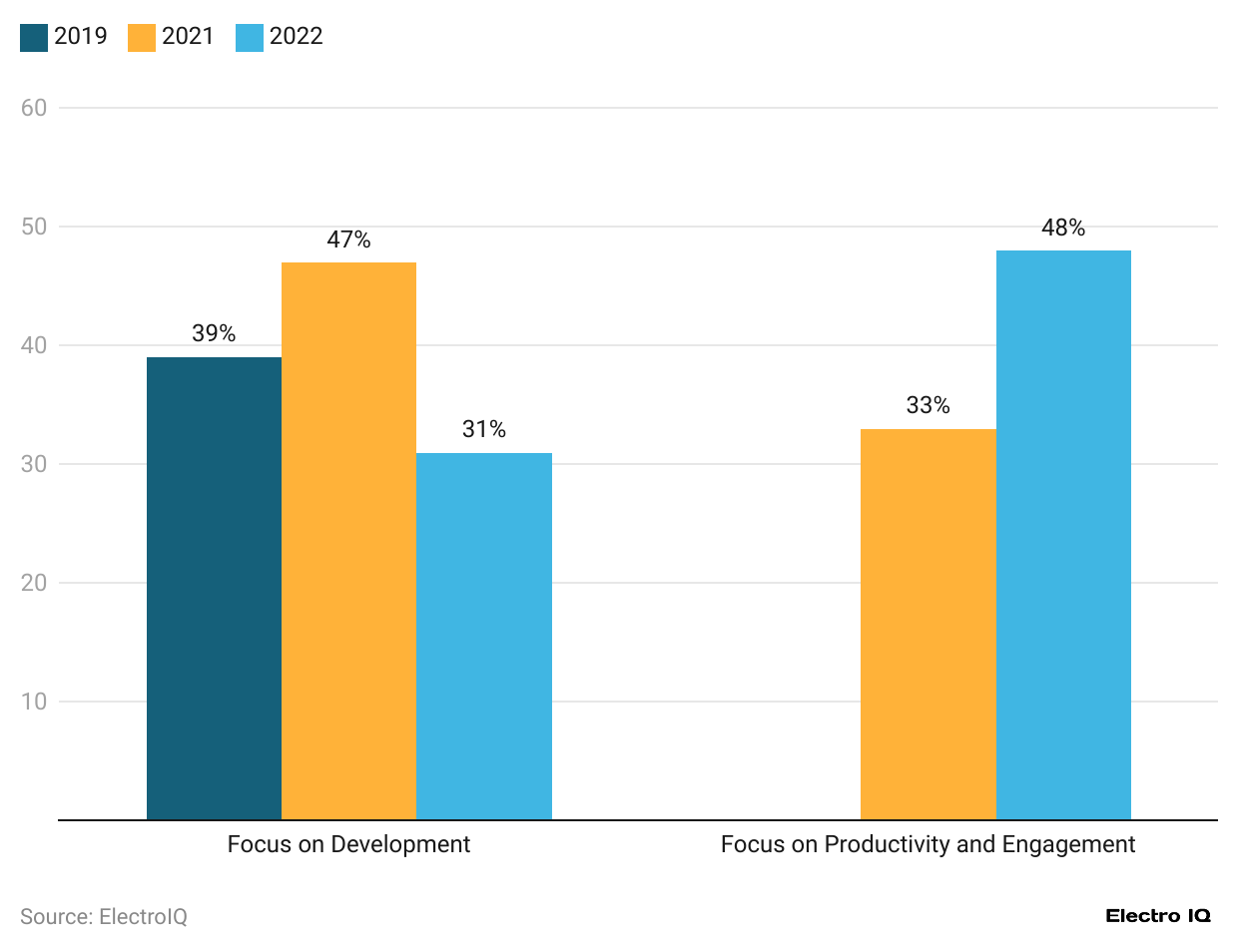
(Reference: enterpriseappstoday.com)
- Performance Management statistics show that, as of 2022, 31% of respondents prioritize development.
- 48% of respondents believe focusing on productivity and engagement is a priority for development.
Employees Cause of Concern
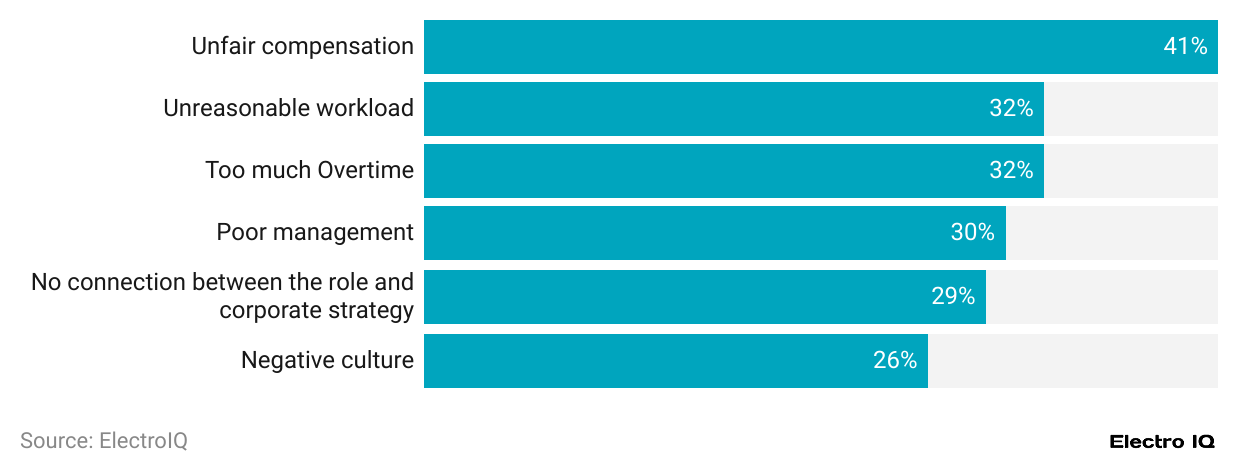
(Reference: enterpriseappstoday.com)
- Performance Management statistics show that for 41% of respondents, unfair compensation is the main source of concern for HR.
- For 32% of respondents, unreasonable workload and too much overtime are key concerns.
- For 30% of respondents, poor management is a significant issue.
- For 29% of respondents, no connection between the role and corporate strategy is a concern.
- For 26% of respondents, negative culture is a major issue.
Employee’s One-on-one Preference with Manager
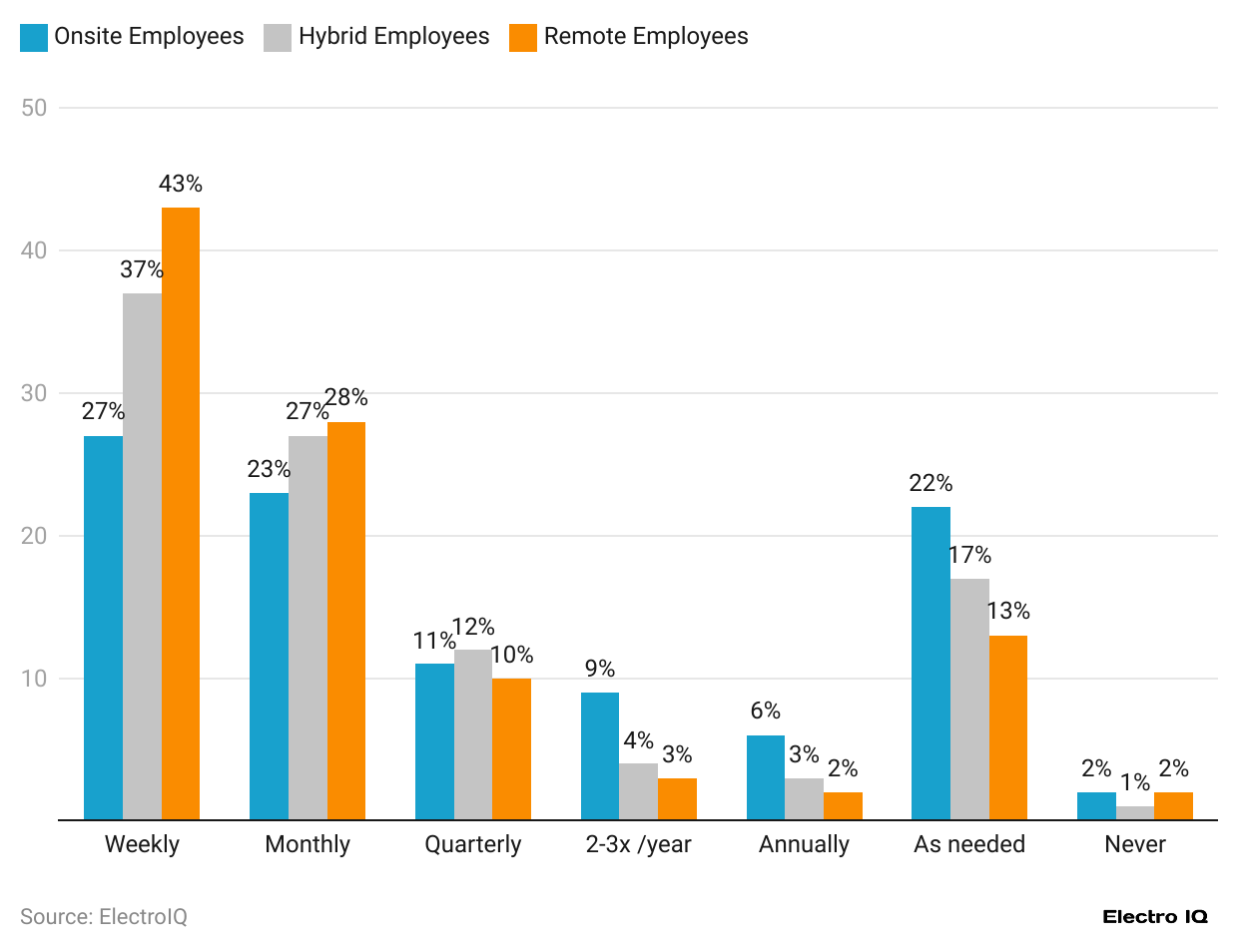
(Reference: enterpriseappstoday.com)
- Performance Management statistics show that 43% of remote employees prefer weekly one-on-one meetings with their managers.
- 37% of hybrid employees prefer one-on-one meetings with their managers.
- 27% of online employees prefer one-on-one meetings with their managers.
Performance Management Assessment
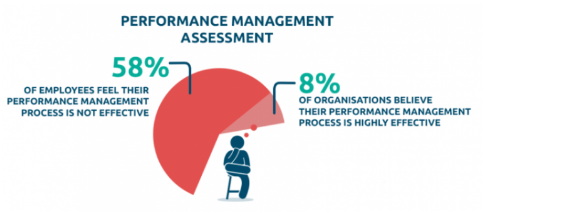
(Source: passivesecrets.com)
- Performance Management statistics show that 58% of employees feel the performance management process could be more effective.
- 8% of employees believe that the performance management process is highly effective.
Annual Employee Engagement
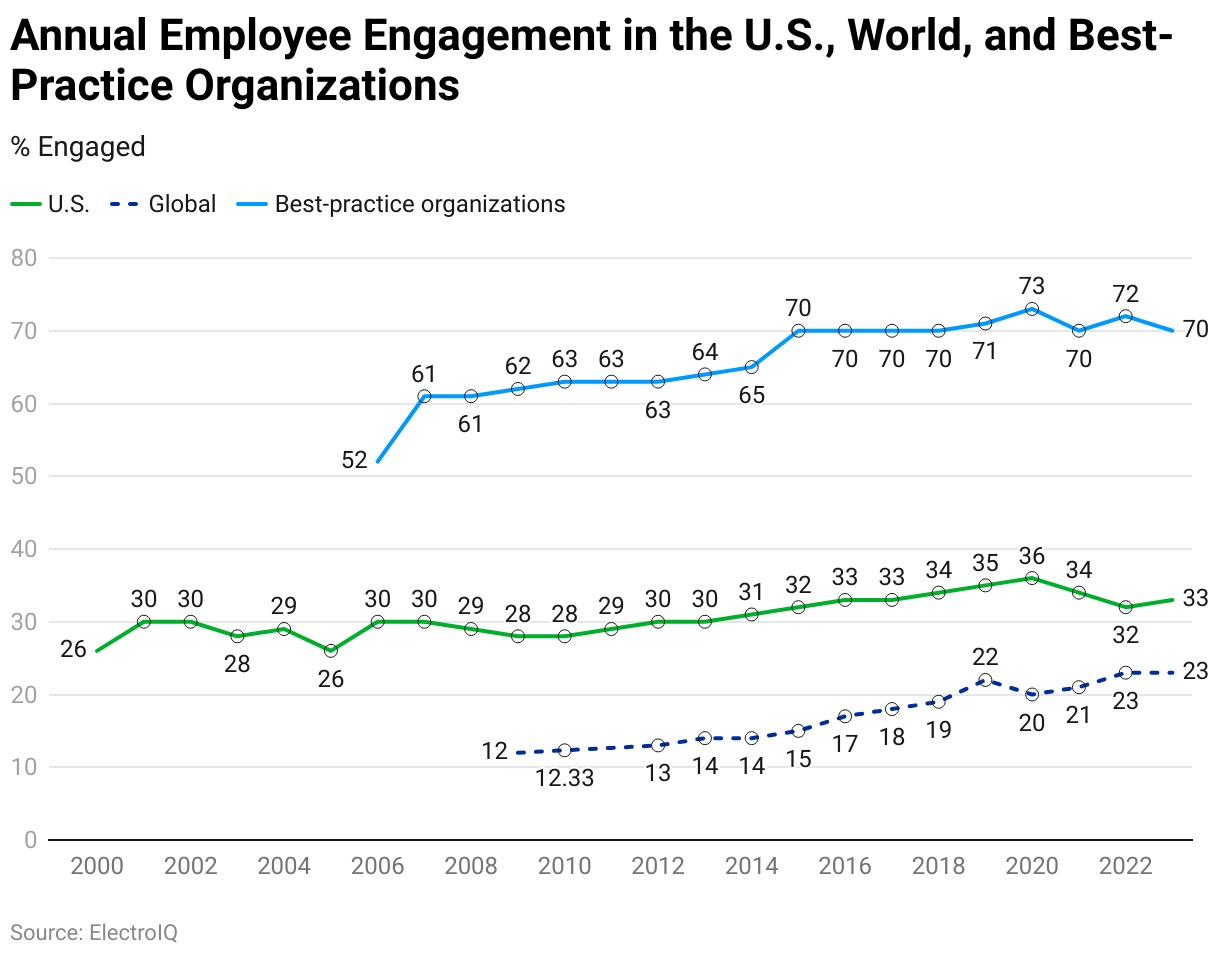
(Reference: gallup.com)
- Performance Management statistics show that employee engagement in the US as of 2023 is 23%.
- Employee engagement in best practice organizations is 70%.
- Employee engagement in organizations globally is 23%.
Employee Performance Management as a Category
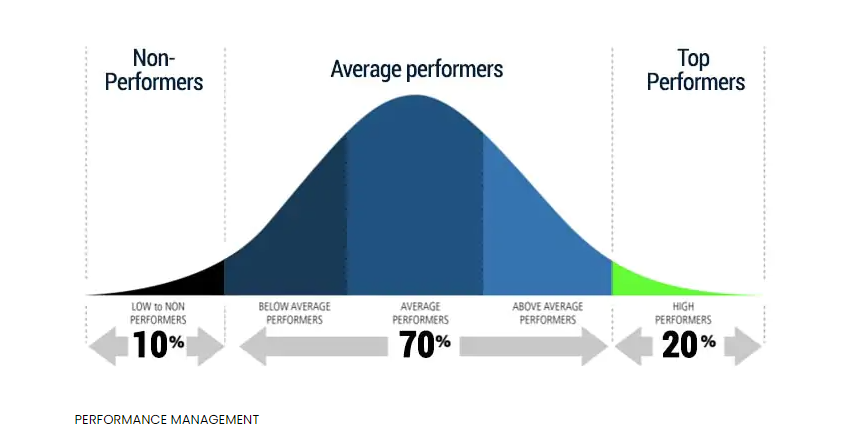
(Source: enterpriseappstoday.com)
- Per employee performance management analysis, performance Management statistics show that 70% of employees are a combination of average, above-average, and below-average.
- Per employee performance management analysis, 10% of employees are low performers.
- 20% of employees are high performers who are categorized as high performers.
Employee Feedback and Engagement Comparison
(Reference: zippia.com)
- Performance Management statistics show that 40% of employees receive no feedback between employee feedback and engagement.
- For 22% of respondents, employees have negative feedback towards the employee engagement process.
- Only 1% of respondents have positive feedback towards the employee engagement process.
Advantages of Employee Feedback Process

(Reference: zippia.com)
- Performance Management statistics show that 85% of respondents say employee feedback benefits them by encouraging them to take more initiative.
- For 73% of respondents, employee feedback leads to better collaboration.
- As per 48% of respondents, employee feedback provides a significant tool for caring more about work.
Employee Feedback Frequency
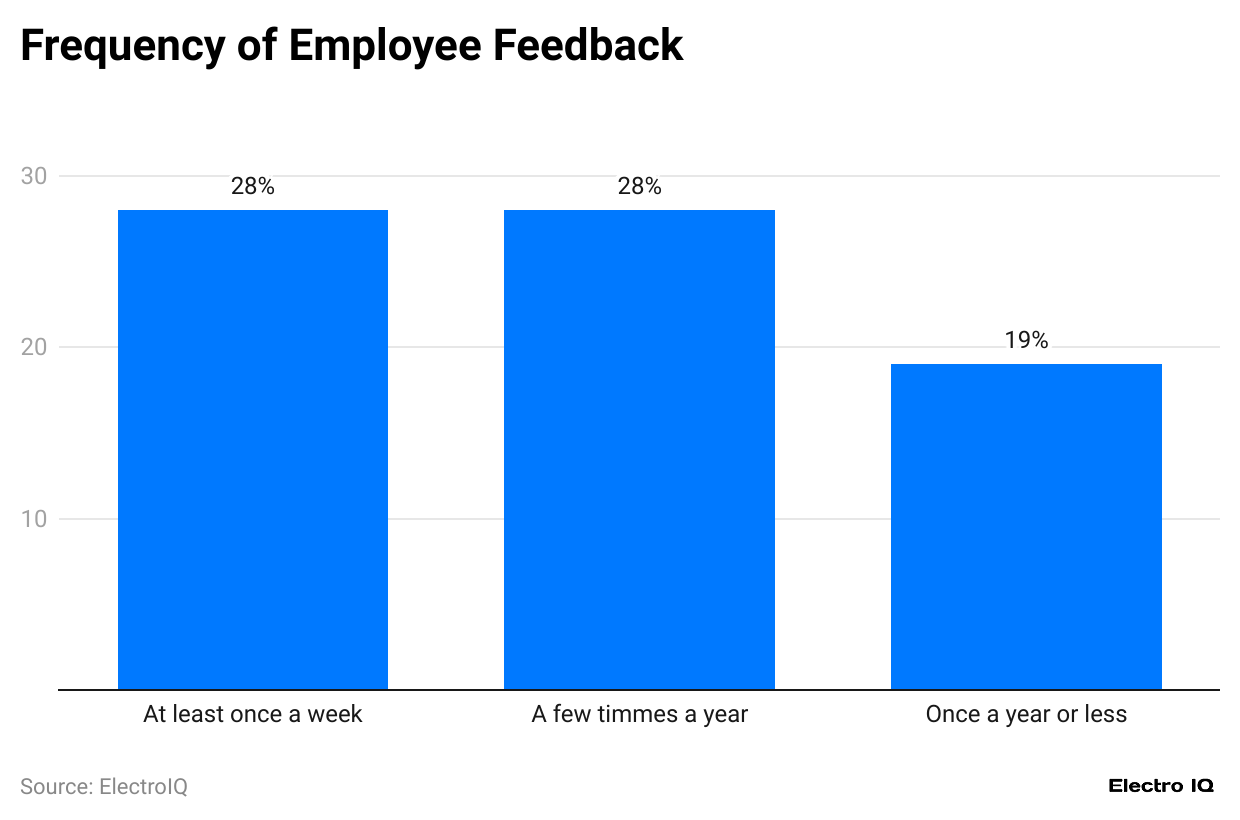
(Reference: zippia.com)
- Performance Management statistics show that for 28% of employees, the frequency of employee feedback is at least once a week and a few times a year.
- For 19% of employees, the frequency of employee feedback is once a year or less.
Manager Feedback Advantages

(Reference: zippia.com)
- Performance Management statistics show that 14.9% of respondents feel manager feedback leads to a lower turnover rate.
- For 12.5% of respondents, manager feedback leads to greater productivity.
- As per 8.9% of respondents, manager feedback leads to greater profitability.
Impact of Training on Employees
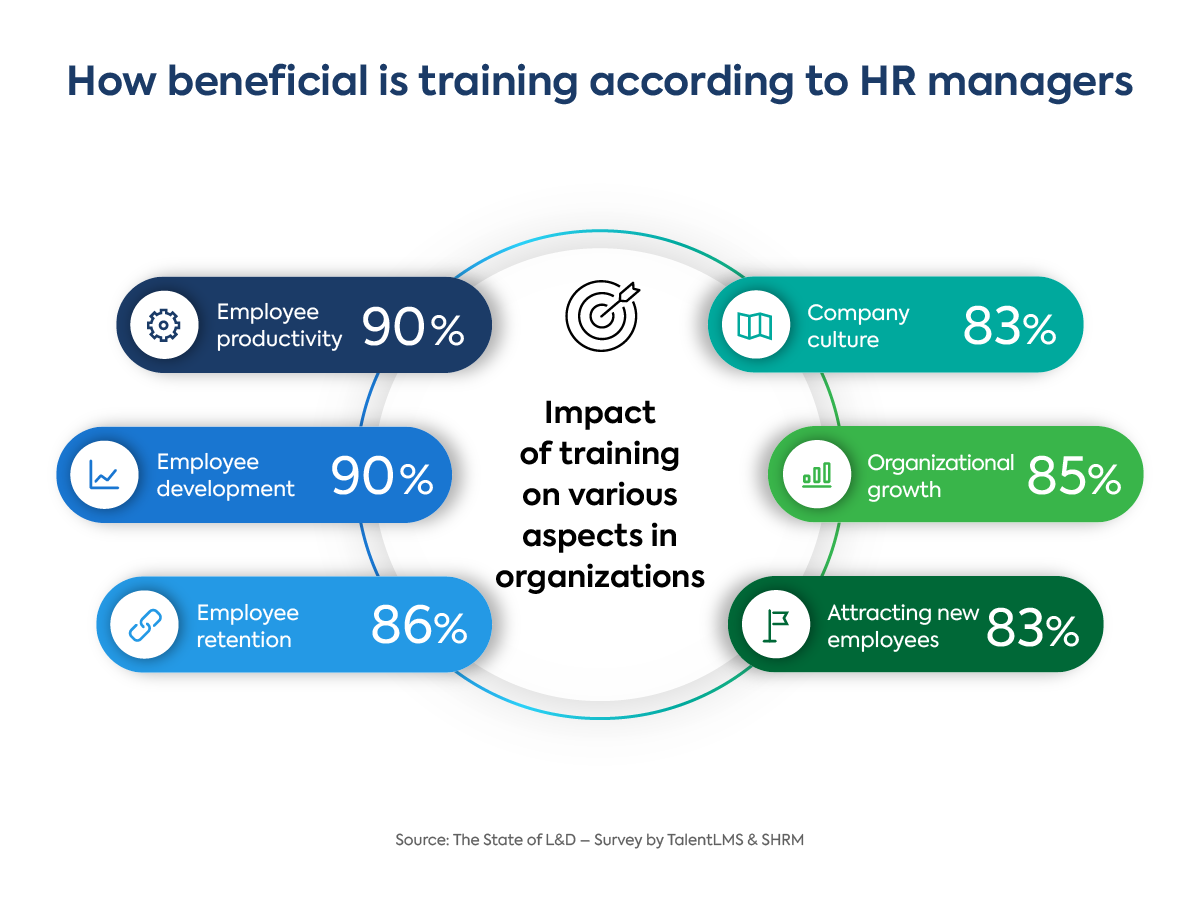
(Source: talentlms.com)
- Performance Management statistics show that for 90% of respondents, proper employee training enhances employee productivity and development.
- For 86% of respondents, training improves employee retention.
- For 85% of respondents, training contributes to organizational growth.
- For 83% of respondents, training enhances company culture.
- For 83% of respondents, training helps in attracting new employees.
Employee Performance Review Overview
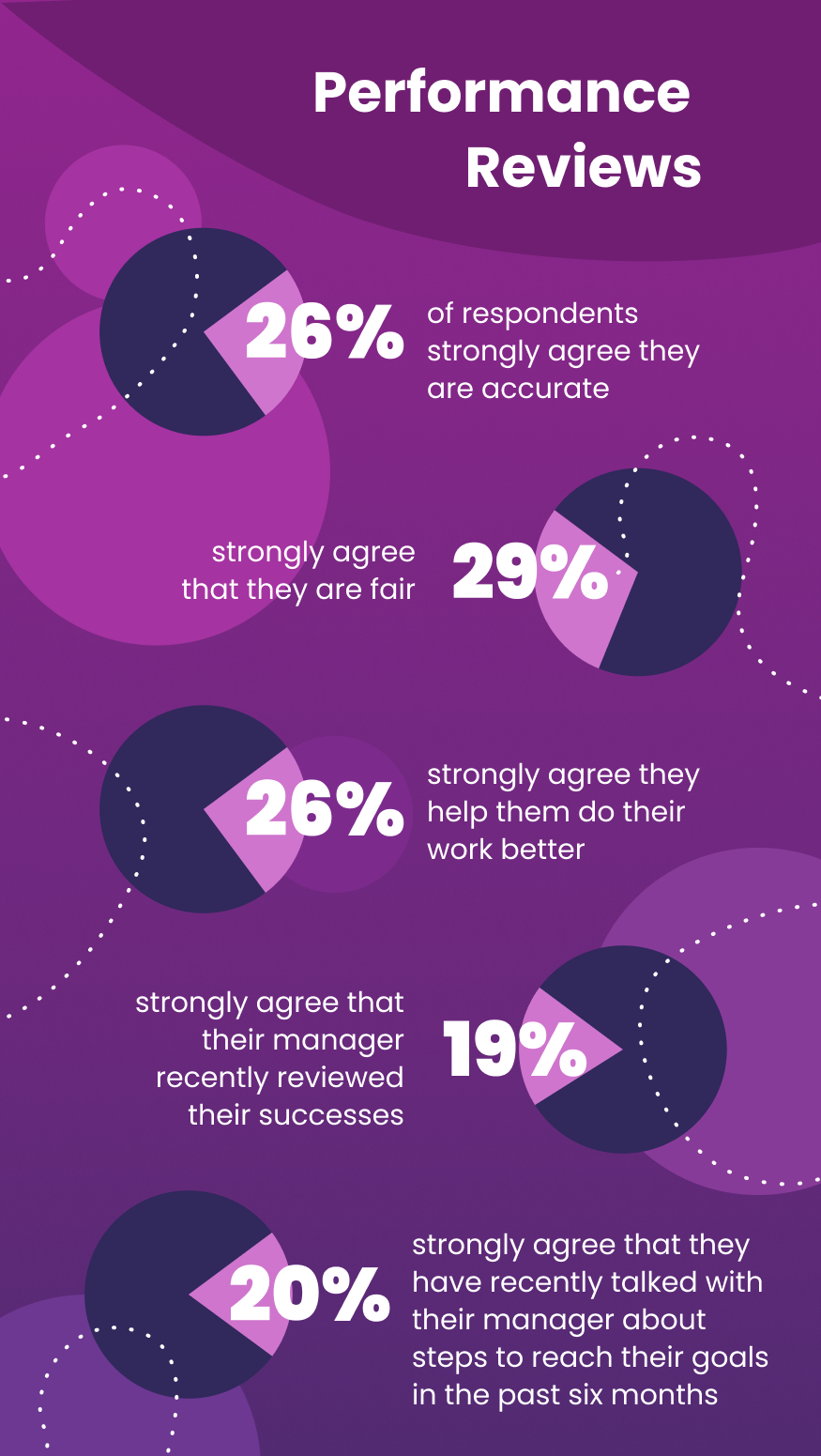
(Source: kaizo.com)
- Performance Management statistics show that 29% of respondents strongly agree that performance reviews are fair.
- 26% of respondents feel that performance reviews are accurate and help them do their work better.
- 20% of respondents strongly agree that they have recently talked with their manager about steps to take to reach their goals in the past six months.
- 19% of respondents strongly agree that their manager recently reviewed their successes.
Hurdles in Performance Management
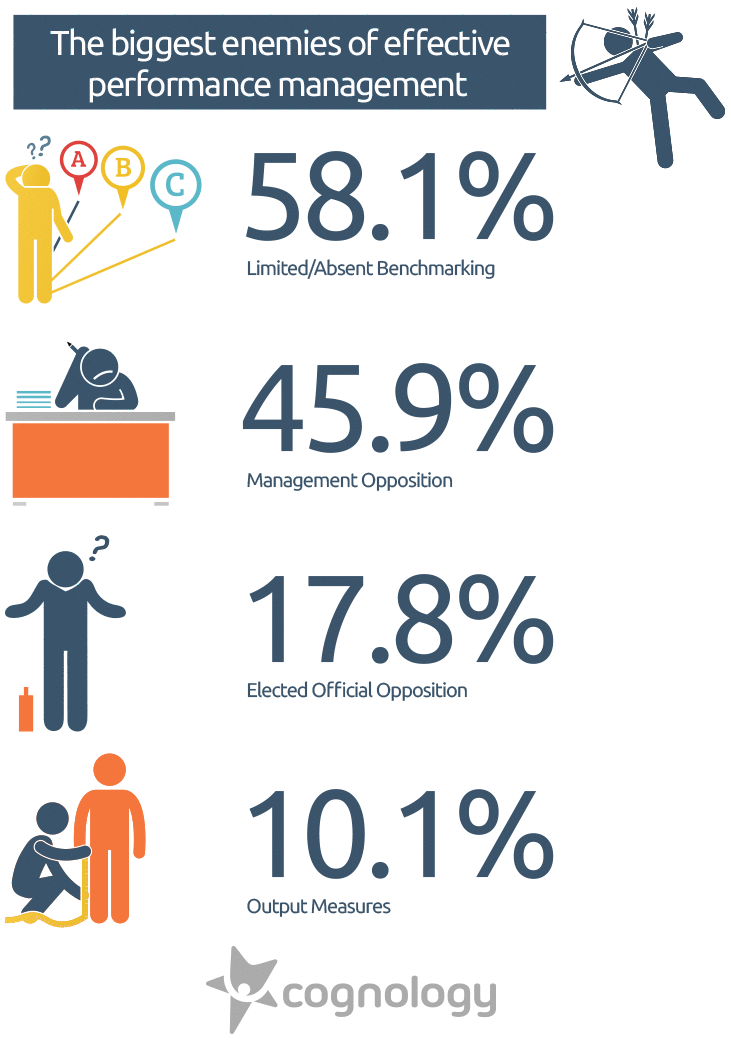
(Source: cognology.com)
- Performance Management statistics show that, for 58.1% of respondents, limited or absent benchmarking is the biggest obstacle to the performance management process.
- For 45.9% of respondents, management opposition is a major barrier.
- For 17.8% of respondents, elected official opposition hinders the process.
- For 10.1% of respondents, output measures are seen as a challenge.
Frequency of Reviews Among Organizations
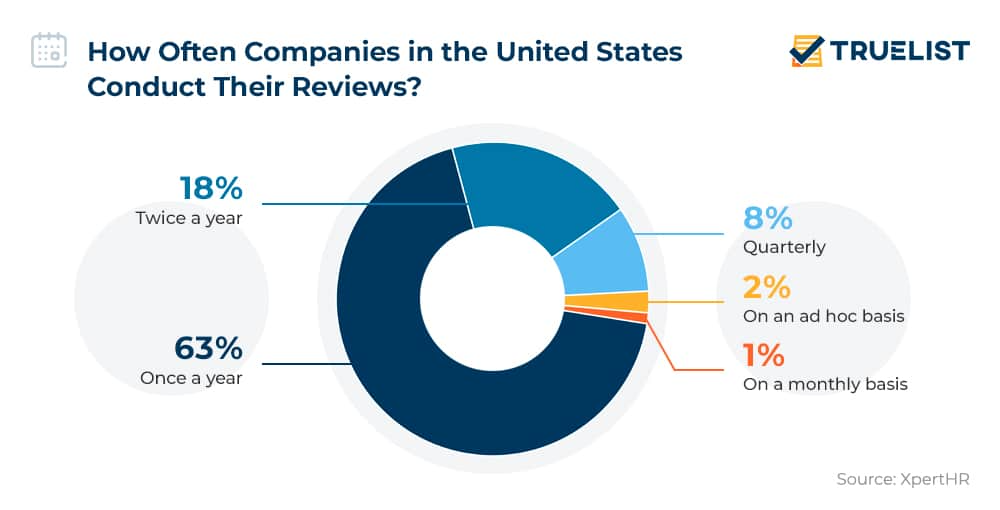
(Source: truelist.co)
- Performance Management statistics show that 63% of organizations conduct employee reviews once a year.
- 18% of organizations conduct employee reviews twice a year.
- 8% of organizations conduct employee reviews quarterly.
- 2% of organizations conduct employee reviews on an ad hoc basis.
- 1% of organizations conduct employee reviews every month.
Conclusion
Performance management is a complex, multifaceted discipline that requires continuous adaptation and strategic thinking. Performance Management statistics reveal significant gaps between organizational intentions and employee experiences. While 48% of organizations prioritize productivity and engagement, only 23% achieve meaningful employee engagement. The path forward involves creating cultures of continuous learning, transparent communication, and mutual growth.
By addressing key concerns like workload, compensation, and strategic alignment, companies can transform performance management from a compliance exercise to a genuine tool for individual and organizational success.
FAQ.
Feedback varies, with 28% receiving it a few times a year and 7% getting daily feedback.
Approximately 20% of employees are categorised as high performers.
58% believe the process could be improved, with only 8% finding it highly effective.
Global employee engagement is around 23%, with best-practice organisations reaching 70%.
Top concerns include unfair compensation (41%), unreasonable workload (32%), and poor management (30%).
43% of remote employees prefer weekly one-on-one meetings with managers.
90% believe proper training enhances productivity and development.
63% of organisations conduct annual employee reviews.
40% of employees receive no feedback between review cycles.
Only 29% strongly agree that performance reviews are fair.

Maitrayee Dey has a background in Electrical Engineering and has worked in various technical roles before transitioning to writing. Specializing in technology and Artificial Intelligence, she has served as an Academic Research Analyst and Freelance Writer, particularly focusing on education and healthcare in Australia. Maitrayee's lifelong passions for writing and painting led her to pursue a full-time writing career. She is also the creator of a cooking YouTube channel, where she shares her culinary adventures. At Smartphone Thoughts, Maitrayee brings her expertise in technology to provide in-depth smartphone reviews and app-related statistics, making complex topics easy to understand for all readers.











